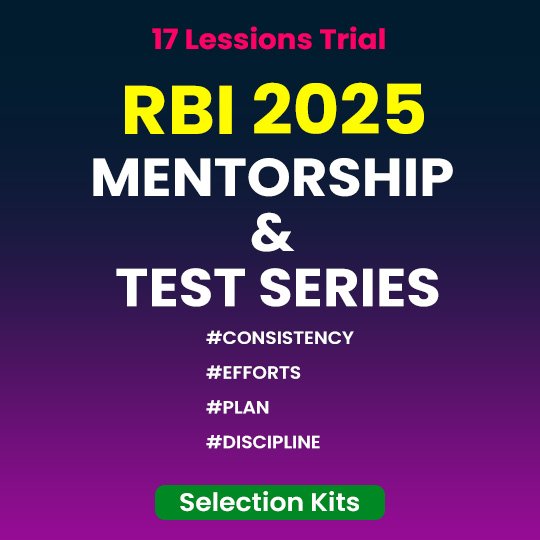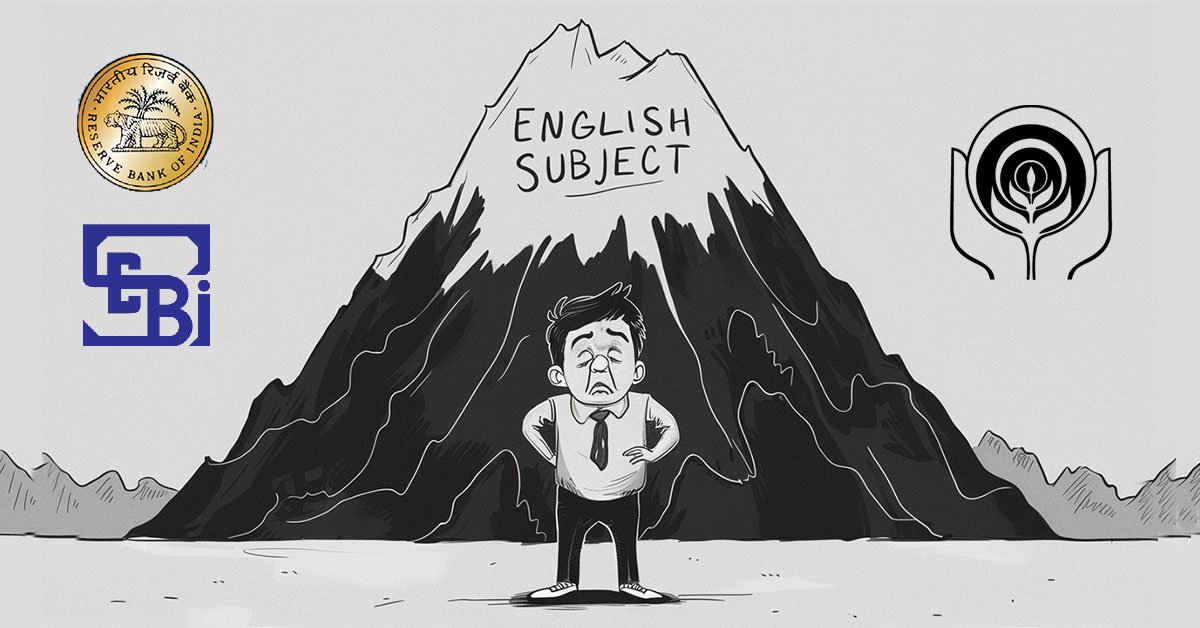Daily Current Affairs Quiz
13&14 November, 2025
National Affairs
1. Climate Risk Index 2026 (Germanwatch, COP30)
Source: IE
Context:
The Climate Risk Index (CRI) 2026, released by Germanwatch at COP30 in Belém, Brazil, assesses global human and economic losses from extreme weather events (EWEs) over 1995–2024. The report highlights deepening climate vulnerabilities, especially in the Global South.
About the Climate Risk Index (CRI)
- Published annually by Germanwatch since 2006.
- Measures the impact of rapid-onset climate disasters such as floods, cyclones, heatwaves, wildfires, storms, and glacial lake outburst floods (GLOFs).
- Six key indicators: fatalities, deaths per 1,00,000 population, economic losses in USD, losses as a % of GDP, number of events, and population affected.
- Data Sources: EM-DAT International Disaster Database, World Bank, IMF.
Key Findings of the CRI 2026 Report
- Top 10 most affected countries are all in the Global South, with Dominica, Myanmar, Honduras, Haiti, and Libya showing severe vulnerability.
- Between 1995–2024, the world recorded 9,700 EWEs, causing 832,000 deaths and USD 4.5 trillion in economic losses.
- Cyclone Nargis (Myanmar, 2008) alone killed approximately 1.4 lakh people.
- India ranks 9th globally in long-term climate impact, underscoring persistent exposure.
India’s Vulnerability According to CRI 2026
- India recorded 430 EWEs over 30 years, leading to:
- – 80,000+ deaths
- – USD 170 billion economic losses
- – 1 billion people affected
- India ranked 3rd globally in 2024 for the number of people affected by climate disasters (after Bangladesh and the Philippines).
- India’s monsoon alone impacted 8 million people in 2024.
- Long-term ranking remains high due to repeated disasters, slow recovery cycles, and high population exposure.
Nature of Disasters Affecting India
- Floods were the world’s deadliest disasters in 2024, affecting ~50 million people.
- Heatwaves impacted ~33 million; droughts ~29 million worldwide.
- CRI covers only rapid-onset events, excluding slow-onset changes like sea-level rise, rising temperatures, desertification, or ocean acidification.
Impacts of Climate Change on India
- Water Crisis
- Himalayan glacier melt threatens major river systems (Ganga, Brahmaputra, Indus).
- Groundwater extraction has surged to 240–260 km³, with Gangetic aquifers falling 4 cm/year.
- Widespread arsenic contamination due to over-pumping; India ranks 120/122 in global water quality.
- Mountain Ecosystem Stress
- Higher frequency of GLOFs, cloudbursts, forest fires (e.g., 2023 Sikkim GLOF).
- Black carbon from vehicles accelerates Himalayan ice loss.
- Threats to biodiversity in the Himalayas, one of India’s four biodiversity hotspots.
- Coastal Risks
- Sea levels rising globally by 3.6 mm/year; Mumbai witnessed a 4.44 cm rise (1987–2021).
- Projected sea-level rise of 0.4–0.8 m by 2100 threatens major coastal cities.
- Seawater intrusion affects 250 million coastal residents.
- Loss of mangroves and coral reefs weakening natural climate buffers.
- Socio-Economic Costs
- Climate change could cut India’s GDP by 6.4–10% by 2100 and push 50 million people into poverty.
- Erratic rainfall and water shortages are reducing agricultural productivity.
- Rising heat stress increases disease burden, especially in dense urban slums.
What India Should Do: Key Recommendations
- Climate Mitigation
- Align with global efforts to limit warming to 1.5°C through rapid emissions cuts.
- Mobilise USD 300 billion by 2035 for climate adaptation and mitigation.
- Scale up solar, wind, and green hydrogen to achieve 500+ GW non-fossil capacity by 2030.
- Water Security
- Update the National Water Policy (2012) for sustainable groundwater and river basin management.
- Promote micro-irrigation, zero tillage, water budgeting, and climate-resilient crops.
- Restore traditional water systems and expand artificial recharge structures (pits, trenches, shafts).
- Coastal Resilience
- Restore and expand mangrove forests, coral reefs, and sand dunes.
- Strengthen early-warning systems for cyclones and storm surges.
- Create social safety nets for climate-vulnerable coastal communities.
- Urban and Energy Transition
- Promote green buildings, cool roofs, permeable pavements, and urban forests.
- Expand battery storage, electric mobility, and carbon-neutral industrial processes.
- Governance and Community Action
- Integrate climate adaptation into all development plans.
- Strengthen community-led resource management models like Jal Sanchay Jan Bhagidari.
- Invest in R&D for carbon capture, climate-resilient crops, and clean technologies.
2. Passport Seva Programme (PSP V2.0)
Context:
The Ministry of External Affairs (MEA) has launched an upgraded version of its Passport Seva Programme (PSP V2.0), along with the Global Passport Seva Programme and the e-passport initiative for citizens in India and abroad. This is part of MEA’s efforts to enhance digital services, simplify processes, and improve user experience.
Key Highlights:
- PSP V2.0 and Global Passport Seva Programme rolled out to improve passport services domestically and for the Indian diaspora.
- Introduction of e-passports marks a significant milestone for the MEA, providing digital security and modern features.
- New passport website and mobile app offer: auto-filled forms, simplified document uploads, and easy online payments.
- Aim: Faster, more user-friendly, and digitally integrated passport application and issuance process.
- MEA emphasized improved citizen experience and reduced administrative bottlenecks.
Additional Details
- E-passports incorporate embedded microchips storing holder information, enhancing security and global recognition.
- PSP V2.0 supports online tracking of applications, appointment booking, and grievance redressal.
- Global Passport Seva Programme enables Indian citizens abroad to apply for or renew passports through local Indian missions and consulates.
3. WHO Global TB Report 2025
Source: TH
Context:
According to the WHO Global TB Report 2025, India has recorded a 21% annual decline in tuberculosis (TB) incidence between 2015 and 2024, nearly double the global average of 12%. This decline is among the highest globally, reflecting India’s robust strategies in TB detection, treatment, and elimination.
Key Highlights:
- 21% annual decline in TB incidence (2015–2024) in India, almost double the global average (12%).
- One of the fastest declines worldwide, showcasing India’s strong TB elimination strategy.
- Significant improvements in early detection, digital reporting, diagnostics, and treatment outcomes.
What is Tuberculosis (TB)?
- Infectious disease caused by Mycobacterium tuberculosis.
- Primarily affects the lungs (Pulmonary TB) but can also impact other organs (Extra-Pulmonary TB).
- Spread through airborne droplets from coughing or sneezing.
- Preventable and curable with timely diagnosis and treatment.
India’s TB Control Strategies Driving Success
| Intervention | Key Features / Actions | Impact / Objective |
|---|---|---|
| Ni-kshay Digital Ecosystem | Real-time case reporting and monitoring through Ni-kshay Portal | Improved traceability of patients and medicine delivery |
| Active Case Finding & Community Screening | Door-to-door TB screening in high-risk districts; Involvement of ASHAs, local health workers, and TB Champions (cured patients) | Early detection of TB cases and enhanced community outreach |
| Strengthened Diagnostics | Expansion of CB-NAAT/Truenat molecular tests; Wider availability of chest X-ray and sputum testing units | Rapid, accurate diagnosis and timely treatment initiation |
| Drug-Resistant TB Management | Adoption of shorter MDR-TB regimens (BPaL, BPaLM); Focus on drug susceptibility testing (DST) | Effective management of drug-resistant TB cases |
| Nutrition Support – Ni-kshay Poshan Yojana | Monthly ₹500 DBT support to TB patients | Improved treatment adherence and nutritional recovery |
Challenges That Still Remain
- High TB burden in densely populated, low-income areas.
- Rising drug-resistant TB (DR-TB) cases.
- Nutritional deficiencies and comorbidities like diabetes help disease progression.
- Migration and urban slum clusters complicate continuous treatment.
Government’s Target
- TB-Free India by 2025, five years ahead of the global target (2030).
- WHO report indicates substantial progress but highlights the need for consistent last-mile delivery and better management of DR-TB.
4. GI Tag Fee Reduced to ₹1,000
Source: TH
Context:
At the Tribal Business Conclave in New Delhi, Commerce and Industry Minister Piyush Goyal announced a significant reduction in the Geographical Indications (GI) tag application fee, from ₹5,000 to ₹1,000, aimed at encouraging tribal artisans to register and protect traditional products.
Key Highlights:
- GI Tag Fee Reduction: Application fee cut to ₹1,000 from ₹5,000.
- Minister urged tribal artisans to register traditional crafts and products to secure legal protection and market recognition.
- Conclave organized by Ministries of Tribal Affairs, Culture, and DPIIT at Yashobhoomi Convention Centre.
- Conclave part of Janjatiya Gaurav Varsh, marking 150th birth anniversary of Birsa Munda.
GI Tags Distributed
- Kannadippaya (bamboo mat) – Kerala
- Apatani textile – Arunachal Pradesh
- Marthandam honey – Tamil Nadu
- Lepcha Tungbuk – Sikkim
- Bodo Aronai – Assam
- Ambaji white marble – Gujarat
- Bedu and Badri cow ghee – Uttarakhand
Geographical Indications (GI)
Geographical Indications (GIs) are a type of intellectual property (IP) that identify goods as originating from a specific geographical region, where quality, reputation, or other characteristics are essentially linked to that location. India has over 400 registered GIs, covering agricultural, handicraft, and industrial products.
Legal Framework in India
- Governing Act: Geographical Indications of Goods (Registration & Protection) Act, 1999.
- Authority: Geographical Indications Registry under the Controller General of Patents, Designs and Trademarks (Chennai).
- International Protection: India is a signatory to the TRIPS Agreement under WTO, which mandates GI protection.
5. SC Directs Jharkhand to Protect Pristine Saranda Forest
Source: TOI
Context:
The Supreme Court of India on Thursday directed the Jharkhand government to declare 31,468.25 hectares (≈314 sq. km.) of the Saranda forest as a wildlife sanctuary, balancing the need for biodiversity protection with sustainable iron ore mining.
About Saranda Forest
- Location: West Singhbhum district, Jharkhand.
- Ecosystem Type: Dense tropical forest, dominated by pristine Sal trees.
- Biodiversity Significance:
- Habitat for Asiatic elephants, chousingha, mouse deer, and sloth bears.
- Recognized as a critical ecological zone by expert bodies.
- One of the world’s most pristine sal forests.
- Home to critically endangered species:
- Sal forest tortoise (endemic)
- Four-horned antelope
- Asian palm civet
- Wild elephants
- Human & Cultural Aspect: Inhabited by Ho, Munda, Uraon, and allied Adivasi communities; their subsistence and cultural traditions are tied to forest produce.
6. India’s Carbon Emission Rise Slower in 2025, Says Report
Source: IE
Context:
According to the Global Carbon Project, India’s carbon emissions in 2025 are expected to rise slower than previous years, reflecting the impact of favourable monsoon conditions and increased use of renewable energy. The findings were released amid COP30 discussions in Belém, Brazil.
Key Highlights:
- India’s Emissions Growth:
- 2025: +1.4%, lower than 2024’s +4% growth.
- Slower growth attributed to favourable monsoon reducing cooling demand and renewable energy expansion, leading to lower coal use.
- Global Context:
- World emissions projected to rise 1.1% to 38 billion tonnes in 2025.
- China: +0.4% (slower growth due to renewable energy expansion).
- USA: +1.9%; EU: +0.4%.
- India’s Carbon Footprint:
- Third largest emitter globally: 3.2 billion tonnes CO2 annually (2024).
- Per capita emissions: 2.2 tonnes CO2/year — second lowest among 20 largest economies.
- Major contributor: Coal; increased renewables have moderated growth.
- Global Emissions Trends:
- Emissions from coal +0.8%, oil +1%, natural gas +1.3% in 2025.
- Permanent deforestation: ~4 billion tonnes CO2/year; reforestation offsets ~50% of this.
- CO2 emissions growth slowed over 2015–2024 to 0.3% per year (previous decade: 1.9%).
- Carbon Budget:
- Remaining budget to limit warming to 1.5°C: 170 billion tonnes CO2 (~4 years at current rates).
- Scientists warn that 1.5°C target is now virtually unattainable at current emission trends.
7. Challenges in Conducting the Household Income Survey (HIS 2026)
Context:
The HIS 2026, to be conducted by the National Statistics Office (NSO), is aimed at collecting household income data for the first time in nearly two decades. Unlike consumption surveys, which households are generally comfortable reporting, income data collection faces unique difficulties, particularly because a majority of Indians work in the informal sector and do not file taxes. Understanding income is crucial for evaluating living wages, earnings adequacy, and social protection policies (linked to Article 43 of the Constitution).
Key Challenges
- Reluctance to Disclose Income
- Pilot survey feedback shows 95% of respondents were uncomfortable sharing detailed income information.
- Questions on income tax paid, non-labour income, and financial assets often receive refusal or under-reporting.
- Phenomenon of “satisficing”: respondents may give approximate or “good enough” answers rather than accurate figures.
- Respondent Availability & Logistics
- Timing of visits is critical: working members are busy in the morning and at work during the day; evenings may be unsuitable due to fatigue.
- Non-working members could respond, but may lack detailed knowledge of household income and investments.
- Survey Overlap and Comparability Issues
- HIS timing overlaps with the Situation Assessment Survey (SAS) of Agricultural Households, which also collects income data.
- SAS collects highly disaggregated income data, which is generally more accurate than a single high-level question in HIS.
- Analysts need to be cautious in comparing income estimates across surveys.
- Non-Response and Data Gaps
- Likely high non-response rates for non-labour income and investment-related questions.
- Respondents may not know details like interest income in the past quarter.
- Data collection needs to account for approximate answers versus precise figures.
- Focus Beyond Consumption
- Historically, India focused on consumption surveys due to food security and hunger concerns.
- HIS aims to shift the focus to income adequacy, earnings, and quality of life, moving the policy conversation beyond poverty estimates based on consumption alone.
8. India Skills Report 2026
Source: TH
Context:
The India Skills Report 2026 highlights a major shift in India’s labour market, driven by rapid adoption of artificial intelligence, automation, and digital transformation. For the first time in five years, women’s employability has overtaken men, marking a significant change in workforce dynamics.
Key Highlights:
- Women Lead in Employability
- Women recorded a 54% employability rate, surpassing men at 51.5%. The increase is driven by higher female participation in BFSI, healthcare, education, and emerging roles in Tier-2 and Tier-3 cities.
- Strong Performance of Computer Science & IT Engineering Graduates
- Computer science graduates reported 80% employability, while IT engineers stood at 78%.
These trends are attributed to rising demand in AI, data analytics, cloud computing and cybersecurity roles.
- Computer science graduates reported 80% employability, while IT engineers stood at 78%.
- AI and Digital Skills Gap
- The report notes a persistent shortage of specialists in artificial intelligence, cloud technologies, cybersecurity, and data science.
- To address this gap, employers and educational institutions are increasingly adopting micro-credentials, stackable certifications, and AI-driven personalised upskilling pathways.
- Sectoral Insights
- Gender preferences vary significantly across industries:
- Women show high interest in legal services (96.4%) and healthcare (85.95%).
- Men continue to prefer fields like graphic design (83.11%) and engineering design (64.67%).
- Gender preferences vary significantly across industries:
- High Internship Demand
- Around 92.8% of students are seeking internships for practical exposure, with the highest interest from Karnataka, Madhya Pradesh, and Tamil Nadu.
- Fresher Hiring Trends
- The IT sector leads fresher hiring at 35%, up from 29% last year, indicating improved business sentiment and demand for entry-level talent.
- Pharmaceuticals, healthcare, BFSI and FMCG remain major recruiters for candidates with 1–5 years of experience.
- Graduate Employability Trends
- Commerce graduates saw a sharp rise in employability to 62.81%, up from 55% last year, driven by BFSI and fintech hiring.
- Science graduates achieved 61%, while Arts graduates recorded 55.55%.
- Vocational skilling also improved, with ITI graduates at 45.95% and polytechnic diploma holders at 32.92%.
9. Cohort Connect 2025
Source: PIB
Context:
The Union Minister of State for Science & Technology launched the Phenome National Conclave on Longitudinal Cohort Studies: Cohort Connect 2025 at CSIR–IMMT, Bhubaneswar.
The initiative is part of Phenome India, aimed at building large-scale, India-specific health datasets for precision medicine and long-term disease prediction.
Key Highlights:
- What it is
- A nationwide scientific platform integrating India’s major longitudinal cohort studies under a unified framework.
- Designed to track how genes, lifestyle, nutrition, behaviour, pollution, and environment influence disease patterns in India.
- Objectives
- Build India’s largest long-term dataset for chronic and emerging diseases.
- Study links between conditions such as diabetes–TB, cancer patterns, neurological disorders, kidney and heart diseases.
- Enable precision medicine and evidence-based policy planning.
- Features of Cohort Connect 2025
- Integrates diverse cohort studies under one national programme (“Cohort Connect”).
- Uses genomic sequencing, biomarkers, digital health sensors, and AI-driven disease modelling.
- Strengthens India’s genomic research—built on sequencing of 10,000 Indian genomes, moving towards 1 million genomes.
- Brings together CSIR labs, DBT institutes, clinicians, epidemiologists, and industry.
- Focuses on India’s unique genetic, dietary, and cultural diversity, often missing from global datasets.
10. Indian Railways Introduces AI-Based Locking Monitoring System ‘DRISHTI’
Context:
Indian Railways is deploying an advanced Artificial Intelligence–powered Locking Monitoring System named ‘DRISHTI’ to strengthen freight train security, improve transparency in cargo movement, and reduce manual monitoring challenges. The system automatically detects unlocked, open, or tampered wagon doors in real time, enabling faster response and safer logistics.
What is ‘DRISHTI’?
- ‘DRISHTI’ is an AI-driven real-time surveillance and locking monitoring technology designed to track the door-lock status of freight wagons throughout their journey.
- It integrates high-precision imaging, computer vision, and ML-based analytics to improve safety and efficiency in freight operations.
Developed By
- Northeast Frontier Railway (NFR)
- IIT Guwahati – Technology Innovation and Development Foundation (IITG TIDF)
Objectives
- Ensure continuous monitoring of wagon door-locking conditions
- Detect tampering, partial locking, or unauthorized door openings
- Reduce dependence on manual inspections across long-distance freight routes
- Enhance the security, reliability, and transparency of freight movement
- Build a scalable, automated monitoring framework for future nationwide adoption
Key Features
- AI-powered cameras and sensor modules installed on freight wagons for continuous surveillance
- Computer vision + machine learning models to analyse door positions and locking integrity
- Instant alerts to railway authorities for any abnormality, including tampering or unexpected movement
- Automated anomaly detection without interrupting normal train operations
- High-accuracy performance demonstrated during 10-month field trials
- Scalable architecture enabling phased expansion across Northeast Frontier Railway and eventually the entire Indian Railways network
Banking/Finance
1. SEBI Conflict-of-Interest (CoI) and Disclosure Overhaul
Source: BS
Context:
A high-level committee, chaired by Pratyush Sinha (former CVC), with Injeti Srinivas as vice-chair, was constituted by SEBI in March 2025 under Chairperson Tuhin Kanta Pandey. The committee aimed to strengthen CoI regulations following past allegations against former SEBI chairperson Madhabi Puri Buch.
The review highlighted gaps in SEBI’s existing CoI framework, including insufficient disclosure requirements and inadequate safeguards for board members and senior officials.
Key Recommendations:
Comprehensive Disclosure
- Scope: Chairperson, Whole-Time Members (WTMs), Chief General Manager level and above.
- Required Disclosures:
- Assets and liabilities
- Trading activities
- Family relationships
- Actual, potential, and perceived conflicts (financial and non-financial)
- Stages: At appointment, annually, upon key events, and at exit.
- Definition of Family: Expanded to include spouse, dependent children, wards, and other financially dependent relatives.
- Part-Time Members (PTMs): Exempt from some obligations due to limited day-to-day involvement.
Insider Status and Trading Restrictions
- Chairperson and WTMs designated as “insiders” under SEBI’s insider trading norms.
- Existing equity or equity-linked instruments (e.g., ESOPs) may be:
- Liquidated
- Frozen
- Sold under pre-approved trading plans
- New investments must be in regulated pooled schemes, capped at 25% of personal portfolios.
- Restrictions extend to spouses and financially dependent relatives.
Conflict Management and Recusals
- Officials must recuse themselves from matters involving conflicts.
- Annual summary of recusals to be publicly published.
Ethics, Compliance, and Oversight
- Office of Ethics & Compliance (OEC) and Oversight Committee on Ethics & Compliance (OCEC) to be established.
- Ban on gifts connected to official dealings, with limited exemptions for nominal public tokens.
- Deployment of AI-enabled monitoring systems to flag potential conflicts.
- Secure anonymous whistle-blower mechanism for staff, intermediaries, and the public.
- Mandatory training and certification programme on ethical conduct.
Regulatory Enforcement
- Separate, enforceable CoI regulations for SEBI board members, replacing the voluntary code.
- Amendments to SEBI (Employees’ Service) Regulations, 2001 to implement new mandates for staff.
Objectives
- Ensure transparency, accountability, and integrity in SEBI operations.
- Prevent misuse of insider information and official influence.
- Build public confidence in SEBI as a market regulator.
- Align SEBI practices with international standards for regulatory ethics and governance.
2. 16th Finance Commission
Context:
As the 16th Finance Commission cycle begins on 1 April 2026, the Union government has asked all ministries and departments to submit detailed information on central sector and centrally sponsored schemes that are ending or continuing beyond 31 March 2026. This is aimed at aligning scheme allocations, funding, and outcomes with the Finance Commission cycle.
16th Finance Commission Cycle (2026–2031)
- Commencement: 1 April 2026
- Purpose: To assess and recommend fiscal transfers, allocations, and grants from the Union Government to States for the next five-year cycle.
- Scope: Covers central sector schemes (CS) and centrally sponsored schemes (CSS), including those ending or continuing beyond 31 March 2026.
- Constitutional Provision for the Finance Commission: Article 280 of the Indian Constitution provides for the establishment of a Finance Commission by the President of India every five years or earlier if deemed necessary.
Key Objectives
- Aligning Schemes with FC Cycle: Ministries and departments must provide detailed information on schemes to ensure allocations correspond with the Finance Commission’s recommendations.
- Optimizing Funding: Enables rationalisation of resources across ministries and States, avoiding duplication and ensuring fiscal prudence.
- Performance-based Planning: Supports assessment of scheme outcomes and effectiveness, feeding into future funding priorities.
- Strengthening Fiscal Federalism: Ensures equitable and transparent distribution of resources between the Union and State governments.
Implications
- For Ministries/Departments: Must submit comprehensive data on scheme costs, duration, outcomes, and beneficiaries.
- For States: Will influence devolution of funds, grants-in-aid, and policy alignment with central priorities.
- For Governance: Promotes accountability, data-driven planning, and efficiency in public spending.
3. Jan Samarth Portal
Source: Mint
Context:
The Department of Financial Services (DFS), under the Ministry of Finance, has launched the Startup Common Application Journey on the Jan Samarth portal, aimed at streamlining credit access for startups across India.
Key Features
- Integrated Digital Platform:
- Provides a single-window application for loans across all Public Sector Banks (PSBs).
- Integrates multiple data sources including PAN, GST, Udyam registration, ITRs, and credit bureau records.
- Enables loan application, comparison of offers, and real-time tracking of applications.
- Loan Facility:
- Loans up to ₹20 crore under the Credit Guarantee Scheme for Startups (CGSS), managed by the Department for Promotion of Industry and Internal Trade (DPIIT).
- Special interest concessions for women entrepreneurs to encourage inclusivity.
- Eligibility Criteria for Startups:
- Startup must be less than 10 years old.
- Annual turnover should not exceed ₹100 crore.
- Development and Launch:
- Developed by Indian Banks’ Association in collaboration with PSB Alliance.
- Launched by M. Nagaraju, Secretary, DFS.
- Part of the Jan Samarth portal, operational since June 2022, a one-stop platform for credit-linked government schemes.
4. Surge in Digital Gold Withdrawals After Sebi Advisory
Context:
On 8 November 2025, the Securities and Exchange Board of India (Sebi) issued a public advisory cautioning investors against dealing in digital gold products. This led to a threefold rise in withdrawals on fintech platforms offering digital gold.
What is Digital Gold?
- Digital Gold refers to gold ownership in electronic form, where investors can buy, sell, or hold gold online without physically taking delivery.
- Typically offered by fintech platforms, banks, or e-commerce apps.
- Backed by physical gold stored in secure vaults, usually in denominations as small as 1 gram.
- Allows easy trading, small-ticket investment, and convenience, but is not a regulated security under Sebi.
Key Highlights:
- Investor Caution:
- Sebi emphasized that digital gold products are not regulated securities and may carry significant market, operational, and liquidity risks.
- Investors were urged to exercise due diligence before purchasing or holding digital gold.
- Market Impact:
- Following the advisory, fintech platforms offering digital gold witnessed a threefold rise in withdrawals.
- The advisory triggered increased scrutiny of digital gold schemes and platforms across India.
- Regulatory Implication:
- Signals Sebi’s growing attention on non-traditional investment products and the need for investor protection in emerging digital asset markets.
- Reinforces the importance of risk awareness and informed decision-making for retail investors.
Significance
- Highlights regulatory efforts to curb speculative or unregulated investment products.
- Demonstrates impact of Sebi advisories on investor behavior and fintech operations.
- Encourages the government and regulators to assess the framework for digital gold and similar assets.
5. Wholesale Inflation (WPI)
Context:
India’s wholesale inflation (WPI) slipped into deflation in October 2025, touching a 27-month low due to a sharp fall in food prices. This is the first time since July 2020 that WPI inflation has turned negative.
Key Highlights:
- WPI inflation fell to –1.21% in October 2025, compared to 0.13% in September.
- Reuters poll had estimated a milder –0.6% decline.
- A year ago, WPI inflation stood at 2.75%.
- The decline was driven primarily by steep deflation in food articles and continued weakness in fuel and power.
Wholesale Price Index (WPI)
- WPI measures the average change in the prices of goods at the wholesale (producer) level, i.e., before reaching consumers.
- Coverage: Includes primary articles (food, fuel, minerals), manufactured products, and fuel & power.
- Purpose:
- Tracks inflation at the factory or wholesale stage.
- Helps policymakers, businesses, and analysts understand price trends in the supply chain.
- Limitation: WPI does not account for services or the actual retail prices paid by consumers.
Consumer Price Index (CPI)
- CPI measures the average change in prices of goods and services purchased by households, i.e., at the retail level.
- Coverage: Includes food, beverages, clothing, housing, health, education, transport, recreation, etc.
- Purpose:
- Tracks retail or consumer inflation.
- Used by the Reserve Bank of India (RBI) to guide monetary policy and interest rate decisions.
- Advantage: Reflects the actual cost of living for households, including services, unlike WPI.
In short:
- WPI = Wholesale-level prices → supply chain perspective
- CPI = Consumer-level prices → retail/household perspective
Agriculture
1. Draft Seeds Bill, 2025
Source: PIB
Context:
A modern, farmer-centric legislation proposed to regulate the seed ecosystem in India. It seeks to replace the Seeds Act, 1966 and Seeds (Control) Order, 1983, introducing a transparent, traceable, and accountable system for registration, certification, quality standards, and digital monitoring.
Objective:
- Ensure high-quality seeds with verified germination, purity, and health standards.
- Protect farmers from spurious, misbranded, or sub-standard seeds.
- Promote innovation and private R&D while reducing compliance burdens.
- Enable digital traceability and transparency through QR codes and a central seed traceability portal.
Background / Need:
- Existing seed laws are outdated, unable to accommodate hybrids, GM traits, private R&D, and global trade.
- Earlier reform attempts (e.g., 2004 Seeds Bill) did not materialize.
- Increasing focus on farmers’ rights, quality assurance, and digital monitoring.
Key Features of the Draft Seeds Bill, 2025
Mandatory Registration of Seed Varieties:
- No seed can be sold without registration based on Value for Cultivation and Use (VCU) trials.
- Existing varieties under the 1966 Act receive provisional registration for 3 years.
- Registration can be suspended or revoked for poor performance or safety concerns.
Farmers’ Rights Protected:
- Farmers retain the right to save, use, re-sow, exchange, and sell farm-saved seeds (except under a brand name).
- Exempt from penalties for selling their own farm seeds.
Quality Regulation & Standards:
- Central Government sets minimum standards for germination, purity, traits, and seed health.
- Mandatory labelling and QR codes ensure traceability.
- Misbranded or spurious seeds are prohibited.
Registration Across the Seed Chain:
- Seed producers, processing units, dealers, distributors, and nurseries must register with State Governments.
- Multi-state companies can be “deemed registered” via a Central Accreditation System.
Certification & Testing Ecosystem:
- Establishment of Seed Certification Agencies and Central & State Seed Testing Laboratories.
- Seed Inspectors and Analysts empowered for sampling, search, and seizure.
Liberalised Seed Imports:
- Imports must meet quarantine regulations and Indian minimum seed certification standards.
- Unregistered varieties allowed for research and trials with approval.
Digital Seed Traceability – SATHI Portal:
- Mandatory onboarding for all producers, dealers, and research bodies.
- Enables end-to-end tracking, transparency, and fraud minimisation.
Graded Penalty System:
- Trivial offences: warnings and small fines.
- Minor offences: penalties up to ₹2 lakh.
- Major offences: penalties up to ₹30 lakh, cancellation of registration, and imprisonment in extreme cases.
- Farmers are exempt from penalties for farm-saved seeds.
Price Regulation in Emergencies:
- Central Government may fix prices during scarcity, monopolistic pricing, or profiteering.
Facts To Remember
1. Tamil Nadu clinches the title in National sub-junior boys’ football championship
In a first for the State, Tamil Nadu won the National sub-junior (under-14) boys’ Tier 2 football championship in Chhattisgarh with a 2-1 win over Telangana on Thursday.
2. 2028 LA Olympics schedule released
The 2028 Los Angeles Olympics competition schedule was unveiled on Wednesday by organisers, including a showcase spot for the women’s 100m and a Super Saturday session.



















